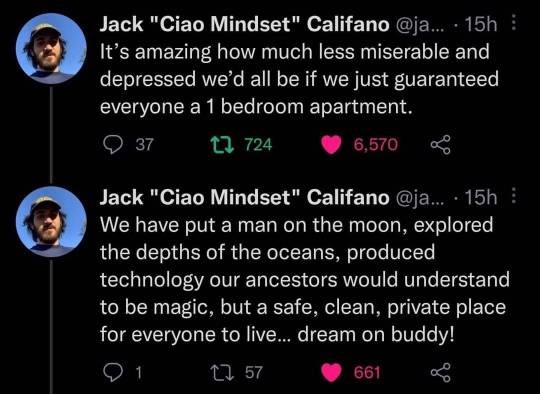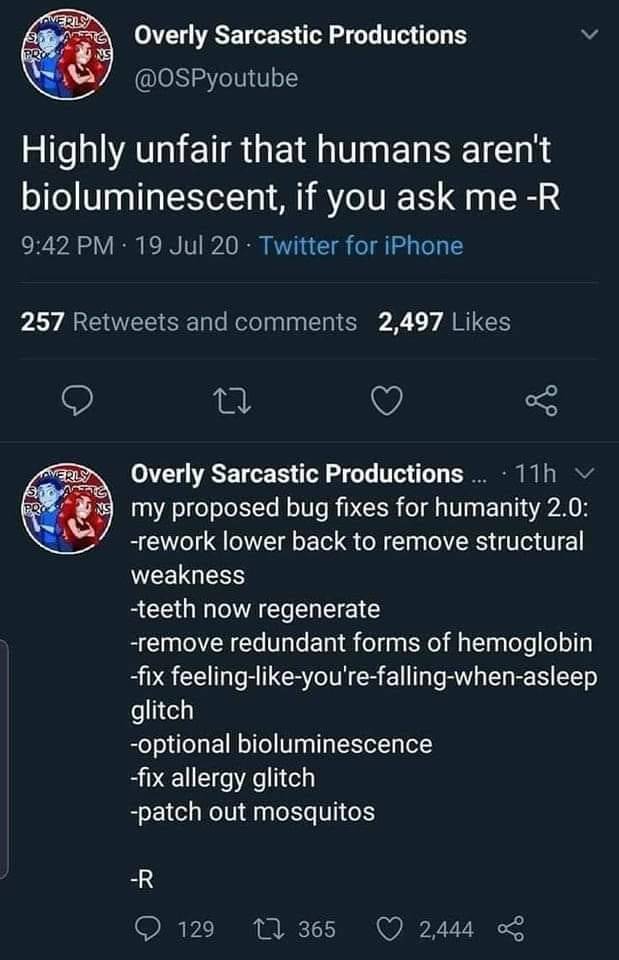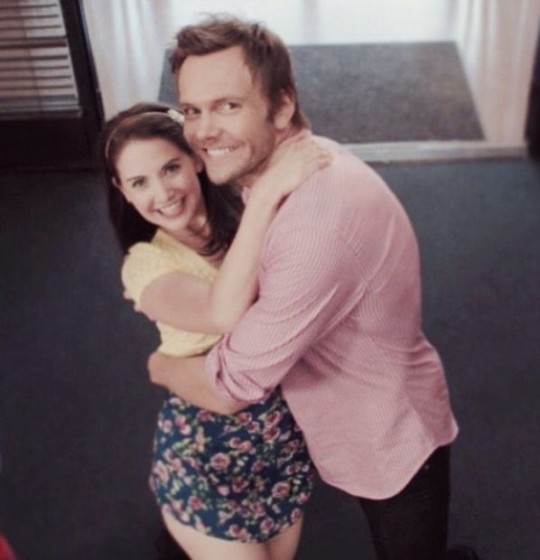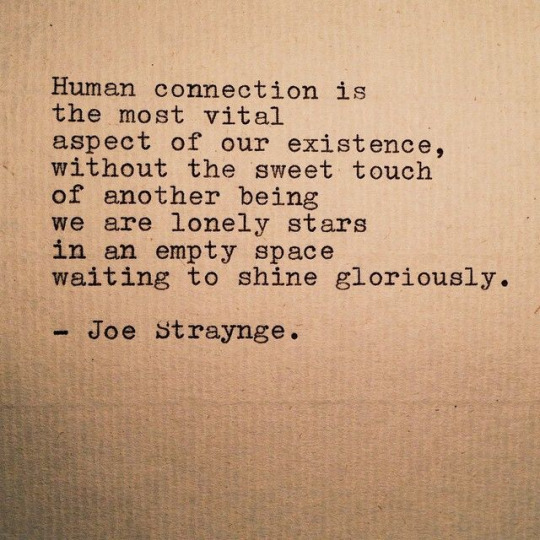#human beings
Text
#art#humanity#kindness#people being people#society#human beings#faith in humanity#india#cleaning#life hacks#tips#how to#love#life#hope#feeling#emotions#existence#reality#real life
31K notes
·
View notes
Text

#socialism#communism#anarchism#marxism#anarchy#antifascism#human beings#kindness#understanding#authenticity#life lessons#empathy#respect#twitter#millionaire#wealth
12K notes
·
View notes
Text
Note: Reasons to Be Cheerful has had weirdly huge formatting issues for the past six or so months, so if that version is a mess, this link should work better.
"Florida Power & Light Company (FPL), the Sunshine State’s largest power utility, employs all the people you might expect: electricians, lineworkers, mechanical engineers — and a few you might not. For over 40 years, the company has kept a team of wildlife biologists on staff. Their task? Monitoring the giant carnivorous reptiles that reside in one of the state’s nuclear power plants.
Saving the American Crocodile
What sounds like a low-budget creature feature is actually a wildly successful conservation story. It goes like this: In 1975, the shy and reclusive American crocodile was facing extinction. Over-hunting and habitat decline caused by encroaching development had pushed its numbers to a record low. By 1975, when it was listed as endangered under the Endangered Species Act, there were only 200 to 300 left.
Three years later, in 1978, workers at the Turkey Point nuclear power plant in Homestead, Florida happened upon something that must have made them gasp: a crocodile nest along one of the plant’s 5,900-acre “cooling canals.” Rather than drive the crocs away — perhaps the easiest solution — FPL hired a team of biologists and implemented a Crocodile Management Plan. Its goal was unconventional: provide a suitable habitat for the crocs within the workings of the nuclear power plant, allowing both to coexist.
Over the course of the next 30 years, FPL’s wildlife biologists monitored nests, tagged hatchlings and generally created a hospitable environment for the reptiles. As it turned out, the plant’s cooling canals provided an ideal habitat: drained earth that never floods on which to lay eggs directly adjacent to water. Over the years, more and more crocs made the cooling canals home. By 1985, the nests at Turkey Point were responsible for 10 percent of American crocodile hatchlings in South Florida. In 2007, the U.S. Fish and Wildlife Service downgraded the American crocodile’s status from endangered to threatened, singling out FPL for its efforts.
The program continues to this day. To date, biologists have tagged some 7,000 babies born at the plant. In 2021, there were a record-setting 565 crocodile hatchlings at the Turkey Point facility.
"Reconciliation Ecology"
Turkey Point’s efforts are an example of what is known in the conservation world as “reconciliation ecology.” Rather than create separate areas where nature or animals can thrive in isolation from humans, reconciliation ecology suggests that we can blend the rich natural world with the world of human activity. Michael Rosenzweig, an emeritus professor of ecology and evolutionary biology at the University of Arizona, was a leading force in establishing this concept. The author of Win-Win Ecology: How the Earth’s Species can Survive in the Midst of Human Enterprise, Rosenzweig has pointed out that although human encroachment has typically been considered a threat to biodiversity, the notion that the world must be either “holy” or “profane,” ecologically speaking, is simply not true.
“In addition to its primary value as a conservation tool, reconciliation ecology offers a valuable social byproduct,” writes Rosenzweig in his first chapter. “It promises to reduce the endless bickering and legal wrangling that characterize environmental issues today.”
-via Reasons to Be Cheerful, May 5, 2022. Article continues below. All headings added by me for added readability.
Dr. Madhusudan Katti, an associate professor in the Department of Forestry and Environmental Resources at North Carolina State University, was inspired by Rosenzweig when he did his postdoc at Arizona State. Katti has now been in the field of reconciliation ecology for two decades and teaches classes on the subject. “To me it’s finding solutions to reconciling human development with biodiversity conservation,” Katti says.
This common ground between development and conservation can be consciously planned, like FPL managing a crocodile habitat at a nuclear power plant or the state-sponsored vertical gardens and commercial farms on high-rise buildings in Singapore. Other examples include the restoration of the coral reef around an undersea restaurant in Eilat, Israel, or recent legislation in New York City requiring patterned glass on high-rise buildings, making windows more visible to migratory birds. Other planned examples of reconciliation ecology can be more individually scaled: a rooftop garden in an urban setting, modifying your garden to earn a “backyard bird habitat” certification from the Audubon Society, or even just mowing your lawn less often...
Reconciliation Ecology: Nature's Already Doing It Without Us
But there are countless examples of “accidental” incidents of reconciliation ecology, as well. One of Katti’s favorites is the kit fox of California’s San Joaquin Valley. “The kit fox was one of the very first species listed on the Endangered Species Act,” Katti says. Its decline was caused by habitat loss through agricultural and industrial development, as well as the extermination of the gray wolf population, which led to an increase in coyotes. So kit foxes adapted and moved to new habitats. One of these was the city of Bakersfield, California.
“Bakersfield, surrounded by oil pumps, would be the last place you’d expect to find an endangered species,” Katti says. But researchers think kit foxes have migrated to Bakersfield because they actually have more protection there from predators like coyotes and bobcats. “The kit foxes have figured out that if they can tolerate the human disturbance and live with people, then they are safer from all these other predators,” he says.
Living in the city has led to some interesting behavioral changes. In the wild, for instance, a female kit fox gives birth to her young and raises them by herself in a den. But in the city, researchers have observed multiple females raising their litters together in the same den. “It’s like a form of cooperative breeding,” Katti says. “That wouldn’t happen in the wild.” ...
The Big Picture: How We Think about Conservation
Reconciliation Ecology isn’t just we humans welcoming animals like crocodiles and foxes into our environments, though. It’s also living with nature in a way that most Western societies haven’t done since the Enlightenment. “In recent years, there’s been a recognition that the ‘fortress conservation’ model — keeping nature separated from humans and not thinking of or valuing human-inhabited landscapes — those ideas are outdated,” says Katti.
In fact, in Katti’s classes on reconciliation ecology, he embraces the notion of reconnecting people with their land if they have been unjustly separated from it. “The term reconciliation also applies to all the colonial legacies where both nature and people have been harmed,” Katti says. “For Indigenous communities, the harm done to ecosystems, it’s happened together. So you can talk about addressing both. That’s where a lot of my thinking is at the moment.”
A hopeful version of this sort of reconciliation is happening in California where colleagues of Katti’s who are tribal members are re-introducing “tribal burns” in some areas. Controlled burns have been a part of many Indigenous cultures for millenia, both as a way to prevent devastating forest fires, but also to encourage the growth of certain plants like hazel that are used for basket-weaving and other crafts.
“The notion that people don’t belong there and ‘let nature take care of itself’ doesn’t really work,” Katti says. “That’s the legacy of Western European Enlightenment thinking — a divide between human and nature. That is a real faulty view of nature. People have been part of the ecosystem forever.”
-via Reasons to Be Cheerful, May 5, 2022
#a bit older but still ongoing/relevant and still very cool#florida#crocodile#reptile#ecology#environment#sustainability#endangered species#united states#california#kit fox#nuclear power plant#reconciliation#colonialism#the enlightenment#conservation#human beings#good news#hope#urban ecology
1K notes
·
View notes
Text

3K notes
·
View notes
Text
Energy Is Everything 🤔
#pay attention#educate yourselves#educate yourself#knowledge is power#reeducate yourself#reeducate yourselves#think about it#think for yourselves#think for yourself#do your homework#do your own research#do some research#ask yourself questions#question everything#energy#human beings#you decide
97 notes
·
View notes
Text

be fucking civil.
#retail#human beings#be gentle with them#basic human decency#holidaze#retail problems#doodles#bad art#lousy drawings#doodle#be nice#fuck capitalism#especially if it creates assholes#like ppl who yell at employees#they are just people#trying their best to survive#fuck you karen
771 notes
·
View notes
Text
i guess the reason why i love community so much is because its just as overdramatic as i am and the fact that every episode is a different plot (there is even a musical episode, one about detectives, lawyers and more), there is a lot of pop culture references, its super queer, autistic and just silly but also sad and complicated IT JUST SEEMS LIKE A LOOK INTO MY MIND WHERE ALL THOSE SAD GOOFY HUMAN BEINGS HANG OUT AND HAVE THEIR LITTLE ADVENTURES






some pictures of the cast cause their lovely (pls ignore ch*vy ch*ase, its not about him)
#nbc community#abed nadir#britta perry#jeff winger#annie edison#shirley bennett#community#six seasons and a movie#sit com#silly people#human beings#greendale#i love my babies#community movie
313 notes
·
View notes
Text
It is painfully easy to define human beings. They are beings who, for no good reason at all, create their own unnecessary suffering.
Natsume Sōseki, I Am a Cat, Vol. III
#Natsume Soseki#Soseki Natsume#I Am a Cat#human beings#humanity#suffering#nihilism#Japanese literature#quotes#quotes blog#literary quotes#literature quotes#literature#book quotes#books#text#words
55 notes
·
View notes
Text
Connection

So Deep, So Vital.
#connection#passionate#passion#spilled thoughts#love#intimacy#desire#physical touch#lonely#longing heart#longing#heartbreak#feelings#lost love#unrequited love#breakup#spilled words#joe straynge#human beings#sweet and sexy#libido and desire#tenderness#touch#closeness
61 notes
·
View notes
Text
Sorrow was never more beautiful.
Death come to me like an old friends.
#poets on tumblr#poetry#books and libraries#quotes#words#words words words#poetic#dead poets society#the walking dead#sorrow#beautiful words#meaning#my words#dark aesthetic#movies#dark art#dark fantasy#darkness#human beings#film photography
68 notes
·
View notes
Text
Julius Malema :"how can you bomb a hospital? Even if hamas run into that hospital - you still can't bomb that hospital."
Netanyahu vocally admits ethnic cleansing is his end goal.
You can't think putin, hitler are bad and not understand he is the same.
Free Palestine
Let Palestine live
#Free Palestine#Human rights#Palestine#Human beings#Morality#Ethnic cleansing#Netanyahu#Genocide#War crimes#Illegal occupation#Illegal colonial settlement#Illegal settlement#Apartheid#Innocent civilians#Gaza#Free Gaza#The West Bank#Gaza strip#Let Palestine live#Israel
86 notes
·
View notes
Text
Dear "TERFs" and "TRAs", this is what I think about you:
Technically, a feminist (radical feminist in this content) is a person that fights for women's rights, and a trans activist is a person that fights for transgender people's rights. They both have very good intentions that I really agree with. But apperantley they are enemies somehow.
But why can't we just get along? I know, I might sound childish, but seriously. Why can't we just mind our bussiness? Why can't we just live our lives without being judged? Why can't we just accept that we're different? Why can't we just accept that people have different opinions? Why can't we have normal and kind conversations and arguments? Why can't we avoid being mean? Why can't we stop this drama? Why?
It is not impossible. Trust me. I know, I know... Probably not many people will see this post. And I know if it is seen I'll get comments like "it's TRAs' fault!" or "TERFs are the problem!", but hate will never be a valid answer for me.
So, "TERF" or "TRA", heart and reblog this post if you took me seriously and agree on the fact that this "digital war" (a bit exagerated, but you got it) should end!
Thank you so so much for reading this! ❤
#radical feminist#feminist#radfem#terf#gender critical#mysogyny#transgender#trans#trans activist#TRA#gender ideology#transphobia#transphobe#transphobic#hate#human beings#differences#controversial#reblog#tumblr
180 notes
·
View notes
Text

"Human beings are born with different capacities. If they are free, they are not equal. And if they are equal, they are not free."
-- Aleksandr Solzhenitsyn
Equity is tyranny.
15 notes
·
View notes
Text
instagram
blackinformationnetwork
A TikToker by the name of hustlanani, who identified as a DC college student named Sanai, has raised over $150,000 after helping a homeless man with prostate cancer in a video that's gone viral.
In the video, Sanai said she was vlogging her trip to the grocery store when a homeless man asked if she could buy him tea. She noted that the man didn't ask for money, so she offered for him to join her on her grocery store trip. During their walk, the man revealed that he needed his medication refilled for the pain he was experiencing. The college student took the man to multiple pharmacies to have his prescription filled and made a stop at Starbucks for tea.
When the man told her that he stayed at a church, Sanai decided to check him into a hotel room for a night. The TikTok video of Sanai helping the homeless man, who has been identified as Alonzo, garnered over 12 million views. Social media users praised the college student for how she helped the man. As of Thursday (February 1), Sanai raised over $150,000 that she plans to use to "make sure he has a place to live, new clothes, shoes, a bank account, doctor's appointments, a phone, etc," she wrote on GoFundMe. Sanai said she plans to document the rest of their journey on her TikTok.
Click LINK IN BIO for more details.
[TikTok: hustlanani]
#Instagram#Humanity#humans being humans#human experience#people being people#society#humanity is beautiful#humanity is good#human beings#Faith in humanity#faith in humanity restored#human things
15 notes
·
View notes